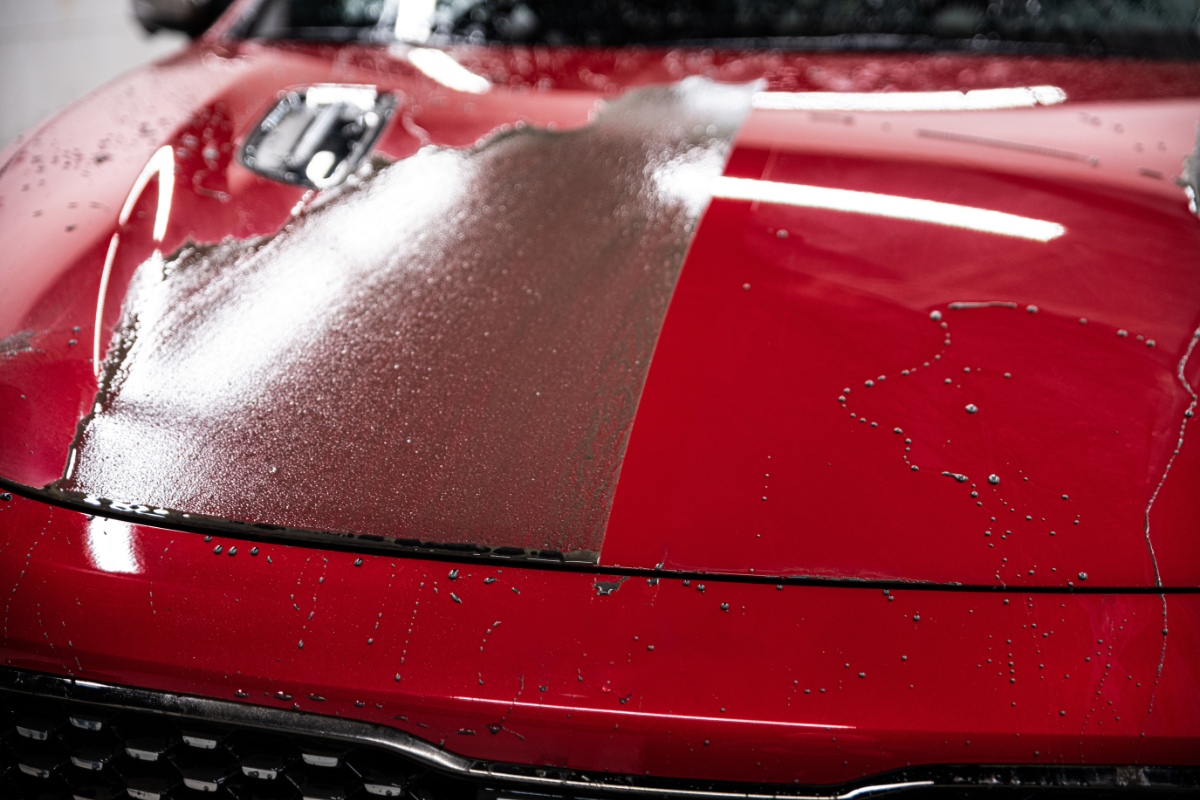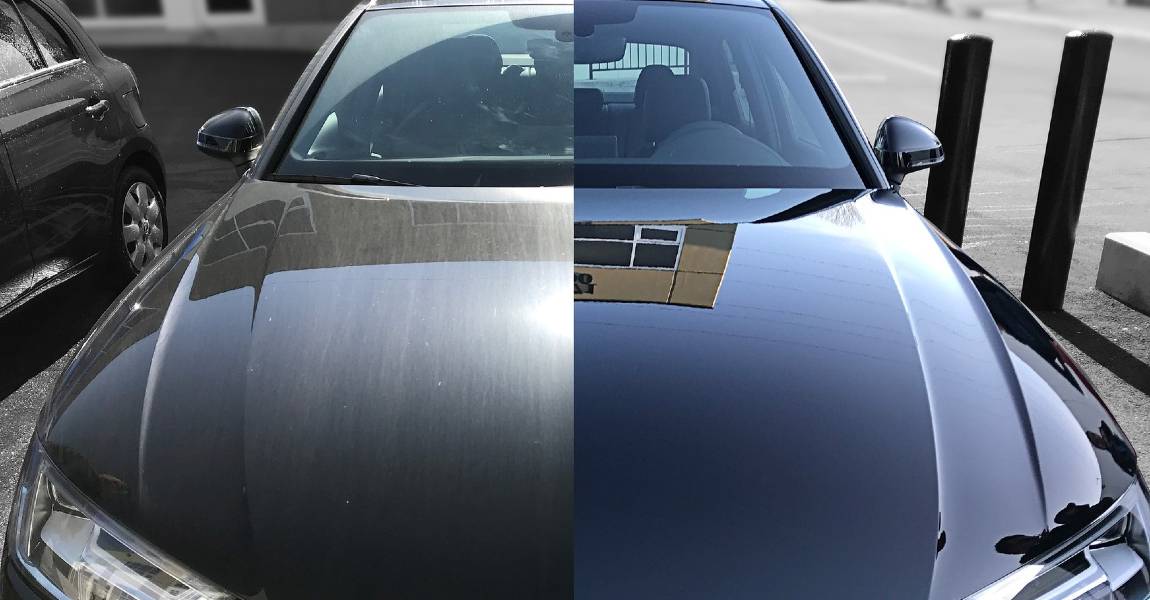Experience high-end car detailing to refresh your vehicle’s interior and exterior.
Experience high-end car detailing to refresh your vehicle’s interior and exterior.
Blog Article
A Comprehensive Guide to the Kinds of Ceramic Finishing on the marketplace
Ceramic finishings have actually emerged as a pivotal option across numerous sectors due to their one-of-a-kind homes and applications. From silica-based solutions known for their effectiveness to hybrid alternatives that merge numerous benefits, the selections offered can be overwhelming. Comprehending the nuances of each kind, including their particular advantages and excellent use cases, is crucial for making informed choices. As we explore the distinct qualities and applications of these finishings, the implications for performance and durability end up being progressively obvious, raising inquiries about which kind may best match your requirements.
Recognizing Ceramic Coatings
Ceramic finishings are innovative protective solutions that have acquired appeal in different sectors, specifically in auto and aerospace applications. These finishes consist of a fluid polymer that, when cured, creates a resilient, hydrophobic layer on the surface of the substratum. This layer provides boosted resistance to environmental pollutants, UV radiation, and chemical direct exposure, thereby extending the life and aesthetic appeal of the underlying material.
The essential element of ceramic layers is silica, which adds to their firmness and resilience. The application process commonly includes surface preparation, application of the coating, and treating, which can be achieved with heat or UV light. As soon as cured, ceramic finishings exhibit extraordinary bonding residential properties, enabling them to adhere highly to a selection of surfaces, including steels, plastics, and glass.
In enhancement to their protective functions, ceramic layers additionally offer simplicity of maintenance. Their hydrophobic nature lowers the adherence of dust and grime, making cleaning easier and less constant. In general, the fostering of ceramic finishes stands for a considerable advancement in surface area defense modern technology, supplying both functional and visual benefits throughout several fields.
Kinds of Ceramic Coatings
Various kinds of ceramic coverings are available, each developed to meet details efficiency demands and applications - ceramic coating sarasota. The most common kinds include:
Silica-based Coatings: These layers primarily contain silicon dioxide and are recognized for their durability and chemical resistance. They are commonly made use of in automobile and industrial applications.
Titanium Dioxide Coatings: Prominent for their photocatalytic homes, titanium dioxide coatings are usually applied in settings where self-cleaning and antifungal residential or commercial properties are preferable, such as in structure products and automotive finishes.
Zirconia Coatings: Defined by their high-temperature stability and thermal resistance, zirconia layers are made use of in applications such as turbine engines and high-performance automobile parts.
Alumina Coatings: Displaying superb hardness and thermal stability, alumina coatings are regularly used in wear-resistant applications, consisting of cutting devices and commercial equipment. - Paint Protection Film
Hybrid Coatings: Integrating the buildings of different materials, crossbreed layers offer enhanced efficiency qualities, making them suitable for special and requiring applications.
Each type of ceramic coating offers distinct objectives, allowing customers to select one of the most proper option based on specific environmental problems and efficiency needs.
Benefits of Ceramic Coatings
Ceramic finishes, in particular, deal numerous benefits that make them significantly prominent amongst manufacturers and consumers alike. These layers are resistant to scrapes, chemicals, and UV rays, making certain that the underlying surface area stays safeguarded over time.
Along with longevity, ceramic coatings give outstanding hydrophobic properties, enabling simple cleansing and upkeep. This water-repellent nature lessens the adherence of dust, crud, and other impurities, which can prolong the visual allure and performance of the surface area. Ceramic finishes can dramatically boost thermal resistance, making them perfect for applications that endure high temperatures.

Application Process
When applying ceramic coverings, a thorough technique is important to achieve ideal results. The application procedure generally starts with thorough surface preparation. This entails washing, decontaminating, and brightening the surface area to remove all pollutants, including dirt, grease, and prior waxes or sealants. A clean surface guarantees correct adhesion of the finishing.
As soon as the surface area is prepped, the following step is to apply the ceramic finishing. This can be done making use of an applicator pad or a their website microfiber towel, making certain also insurance coverage. It is important to function in small areas to maintain control and prevent early curing. The finishing must be used in slim layers, as thicker applications can result in unequal finishes.
After application, the finish needs a specific healing time, commonly varying from a few hours to a full day, depending on the item. Complying with these steps diligently will make best use of the performance and long life of the ceramic finish, offering a resilient protective layer for the surface area.
Maintenance and Longevity
To make certain the durability and performance of a ceramic layer, routine maintenance is crucial. Ceramic finishes, understood for their resilience and protective top qualities, need certain treatment regimens to maximize their lifespan and efficiency. The very first step in upkeep entails routine cleaning with pH-neutral soap, avoiding rough chemicals that can break down the covering. It is suggested to wash the vehicle regularly, ideally every 2 weeks, to stop the buildup of impurities that could compromise the layer's honesty.
In addition to normal washing, periodic examinations are critical. Search for indicators of wear or damages, such as hydrophobic buildings lessening or surface area blemishes. If necessary, a light gloss might be put on invigorate the finishing without removing it away.
Moreover, the application of a booster spray can improve the finishing's hydrophobic impacts and recover its gloss. This is specifically valuable for finishings that why not look here have remained in use for a prolonged period. Eventually, by adhering to these maintenance practices, one can substantially expand the life of a ceramic covering, making sure that it proceeds to give optimal protection against ecological factors and preserve the visual appeal of the automobile.
Final thought

Report this page